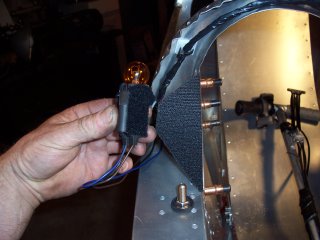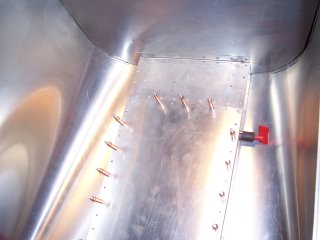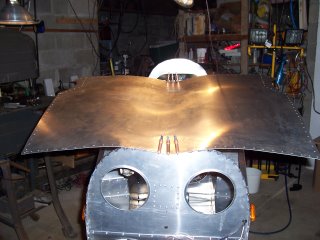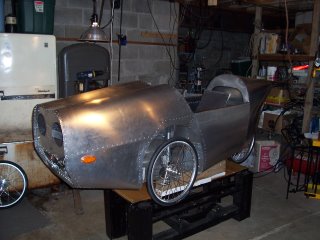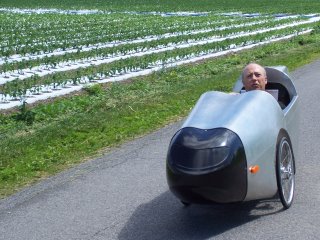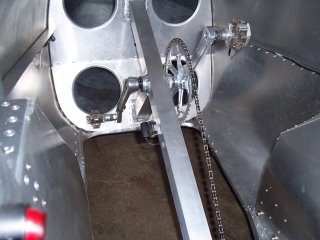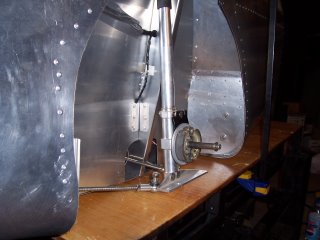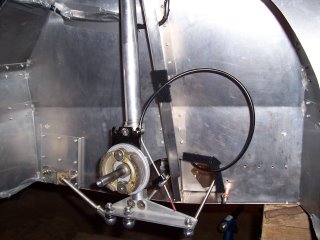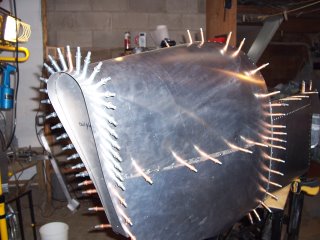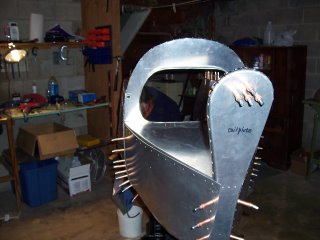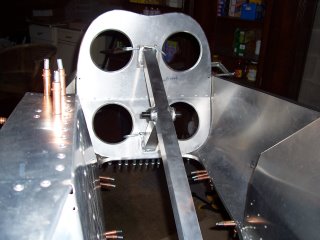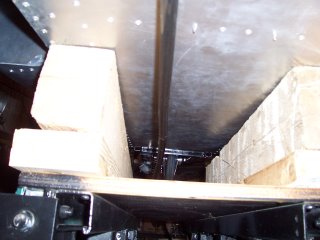Maiden Voyage...second trip
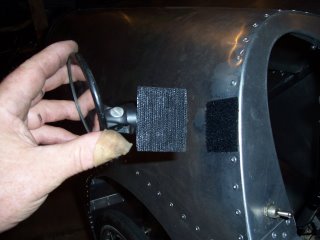
After searching for hours out in the garage, I finally located an old Third Eye mirror,that mounted in the end of a mtn bike bar. While thinking about a way to mount it, I found some plastic clamps to attach the mirror to an aluminum plate, and thus velcro it onto the Alleweder. I don't have the canvas cover yet, so I didn't want a permanent set up, but still needed a mirror.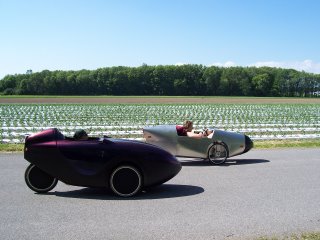 With the temporary mirror in place Leah and I were off for our first velomobile ride together, she in the Alleweder, and I in the Versatile. It was just an 8 mile ride to Hamburg and back, but on the way back, Leah complained of poor shifting, and strange noises. Upon inspection, I found that the upper chain tube (the one mounted in the floor) had come loose, and was caught under the idler sprocket just aft of the chain ring. I removed the idler, the rear wheel, and took the chain apart to remove the chain tube for inspection. After straightening it out, it was serviceable enough to use, but I decided to make an access hole at the rear attachment point, so this problem could be dealt with on the road if necessary. I drilled out the rivets in the back piece of floor and cut out the area I wanted to get at, using sheet metal screws to attach a plate over the hole.
With the temporary mirror in place Leah and I were off for our first velomobile ride together, she in the Alleweder, and I in the Versatile. It was just an 8 mile ride to Hamburg and back, but on the way back, Leah complained of poor shifting, and strange noises. Upon inspection, I found that the upper chain tube (the one mounted in the floor) had come loose, and was caught under the idler sprocket just aft of the chain ring. I removed the idler, the rear wheel, and took the chain apart to remove the chain tube for inspection. After straightening it out, it was serviceable enough to use, but I decided to make an access hole at the rear attachment point, so this problem could be dealt with on the road if necessary. I drilled out the rivets in the back piece of floor and cut out the area I wanted to get at, using sheet metal screws to attach a plate over the hole.
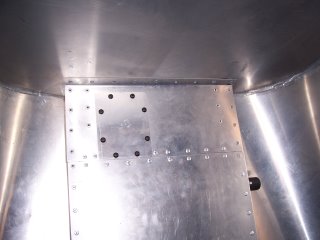
I did rework the mount for the chaintube, and have hopefully corrected the problem, but it's good to know that I can now deal with it on the road if I need to. The other problem that occurred on the maiden voyage was that when Leah clipped out of her pedals she inadvertantly popped the hood by bumping it with one of her shoes. I was able to get it back down, but it has some wrinkles in it now. I am thinking that if it continues to be a problem, I will make up a bracket to tie the middle of the hood to the square tubing, and put in a few rivets sealed with RTV. I also popped the right brake cable on the Versatile while we were out. My previous experience with the shifter problem I had had left me prepared for this repair,which only ended up taking about half an hour. While the brake handle was off, I took the time to chamfer the hole where the cable exits the brake lever to extend the life of the next cable. It was nice to find that the reversing wheel which enables either brake handle to operate both brakes simultaneously also allowed me to stop the Versatile with one cable broken. Nice design.
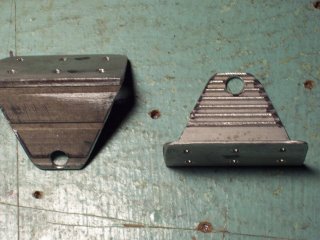
Since I had had such good luck with velcro, I decided to make up a temporary headlight mount outside the nosecone. I started off by making these angle brackets from an old piece of screen door. I used the lathe to center drill,and tap a plastic dowell to go between the brackets, and mount the light to. I then cut a piece of Al. to rivet the brackets to, and attached the 2" sticky back velcro hook material to the bracket. I used the loop material on the nosecone, and drilled a hole for the wires that was in a location where it would be removed anyway if I decide to mount the lights inside behind the plexiglass. Actually, this "temporary" set up looks kind of neat, works well, and I have to believe that the lights are much brighter mounted on the outside.
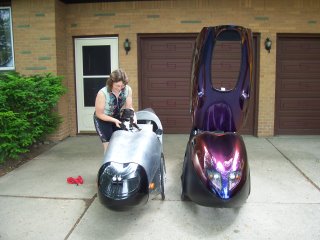
Here you can kind of see the finished light mount as we prepare for a trip into Eden, with canine passenger.
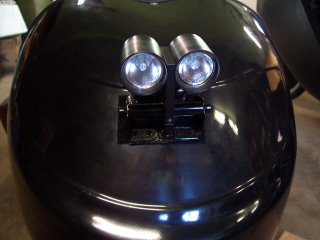
Perhaps this is a little better view. The second ride had no chain tube or hood problems, but we did get a flat tire. No biggie, I had several spare tubes, and a pump in the Versatile. Tools aren't even really necessary, because the front wheels don't need to be removed to change a tube or tire.
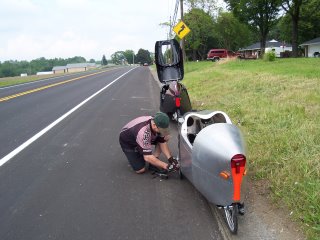
Well, I guess that catches us up for now. I will post new developments, repairs, improvements, etc. as they occur. I have also begun a blog on my Versatile, starting with my trip to The Netherlands. It can be found at: http://snapmobile.blogspot.com .
